I am trying to draw a png image, the contents of which I have in memory in an ARGB32 format, using C++ Cairo and Gtk on Ubuntu.
First, I create a GtkDrawingArea, then on its expose-event I draw a solid blue background with a red line from top left to bottom right, then I create a surface and try to draw it onto the drawing area. Here's my expose-event callback:
unsigned char *pCairoBuf = ...
....
gboolean OnDrawingAreaExposeEvent(GtkWidget *pWidget, GdkEventExpose *pEvent, gpointer data)
{
cairo_t *cr = gdk_cairo_create(pWidget->window);
cairo_set_source_rgb(cr, 0.0, 0.0, 1.0);
cairo_rectangle(cr, 0.0, 0.0, pEvent->area.width, pEvent->area.height);
cairo_fill(cr);
cairo_set_source_rgb(cr, 1.0, 0.0, 0.0);
cairo_set_line_width(cr, 10.0);
cairo_move_to(cr, 0.0, 0.0);
cairo_line_to(cr, pEvent->area.width, pEvent->area.height);
cairo_stroke(cr);
// Use the existing buffer pCairoBuf that has (iRenderWidth * iRenderHeight * 4) bytes, 4 bytes per pixel for ARGB32 and zero row padding
cairo_surface_t *pSurface = cairo_image_surface_create_for_data(pCairoBuf, CAIRO_FORMAT_ARGB32, iRenderWidth, iRenderHeight, (iRenderWidth * 4));
cairo_set_source_surface(cr, pSurface, 0.0, 0.0);
cairo_paint(cr);
cairo_destroy(cr);
return TRUE;
}
The drawing area and the image are both 244x278 pixels. The image is an image of Smokey the Bear's head and is transparent around his head:

And I expect the final result to look like this:

But it ends up looking like this:

I did not add the code that shows how I got the data buffer pCairoBuf because I figured it would only cloud the issue, but perhaps I'm wrong? I figured that there's something else I'm doing wrong having to do with cairo surfaces, etc. that would explain the difference between what I'm expecting and what I'm getting.
Thanks in advance for any help!